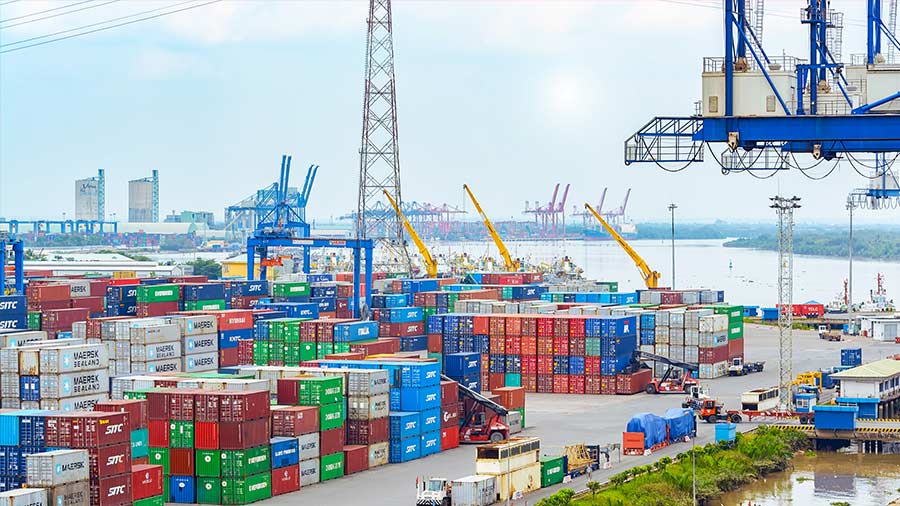- Vietnam led Southeast Asian countries with social commerce accounting for most of its online retail economy in 2020.
- Due to the high rate of social media use in the country, social commerce as a sub-channel to e-commerce is driving growth contributing to half of the e-commerce sector.
- Vietnam Briefing highlights the characteristic of social commerce in Vietnam, the regulations as well as the opportunities for investors in the industry.
What is social commerce?
Social commerce is a sub-sector of e-commerce that involves social media and online media that supports social interaction, online buying, and selling of products and services.
Social commerce sellers can be as small as one person selling products to their followers on social media platforms like Instagram or Facebook. Many do not have a web storefront and instead rely on private messages to take orders and payments.
In May 2020, Vietnam’s Prime Minister released Decision 645/QD-TTg approving the National Master Plan for e-commerce development for the period of 2021-2025 with two key objectives:
- 55 percent of the country’s population will participate in online shopping, with an online trading value of US$600/person/year; and
- Business-to-consumer (B2C) e-commerce revenue (for both online trading goods and services) increases by 25 percent per year (US$35 million), accounting for 10 percent of total retail sales and consumable service revenue in the country.
In order to successfully realize these two goals, it is important to reinforce and diversify e-commerce channels. For that, social commerce has emerged as a cost-effective e-commerce support channel, especially for small and household businesses.
However, due to the prolonged pandemic and the new normal, even large brands and enterprises have had to expand their social network-based channel to distribute their goods and services.
According to a recent Bain & Co report, social commerce in Vietnam accounted for 65 percent of Vietnam’s US$22 billion online retail economy last year.
| Country | E-Commerce GMV (US$) | Social commerce | E-commerce |
|---|---|---|---|
| Indonesia | 47 billion | 12 billion | 34 billion |
| Malaysia | 10 billion | 3 billion | 6 billion |
| The Philippines | 8 billion | 3 billion | 4 billion |
| Thailand | 22 billion | 11 billion | 11 billion |
| Vietnam | 22 billion | 14 billion | 17 billion |
Source: Bain & Co.
The selling of products through social media
E-commerce in Vietnam is growing at an extremely rapid rate. Social commerce, as a subsector of e-commerce, is gaining momentum as a dynamic and cost-effective channel for businesses and enterprises to approach customers.
However, one of the major differences between social commerce and e-commerce is that social commerce is yet to be equipped with online ordering functions. Further, buyers and sellers have to directly contact each other to complete transactions. In the meantime, e-commerce purchases are finalized on e-commerce platforms, from ordering to shipping and delivery.
Even though some social platforms like Facebook or Zalo (a Vietnamese social media platform) have adopted e-commerce-like functions (such as Facebook Marketplace or Zalo Shop), these functions only cater to the introduction and the information provision of the products, rather than supporting online ordering, shipping or payment features.
Social commerce in Vietnam
Most-used social platforms
While Facebook is not the only social media platform in use for social commerce in Vietnam, it is by far the leading shopping destination, having a much higher penetration rate for online shopping than other social channels.
Apart from Facebook, Vietnamese Zalo is the second most-used channel for social commerce, while other international social media platforms such as Instagram and TikTok have also been demonstrating growth potential, especially among the younger demographic.
According to a recent survey, among many reasons for using social media, over a third of the internet users in the country stated that they relied on these platforms to find products to purchase.
Diversified products increasingly sold on social commerce
Before the pandemic, social commerce was most commonly used for buying clothes and personal care products, especially among younger females. Nowadays, more Vietnamese consumers have turned to online channels for essentials and consumer goods products. Social commerce usage has now extended beyond fashion and cosmetics, with purchases ranging from fruit to home appliances.
Surprisingly, 55 percent of Vietnamese online shoppers prefer to shop for fashion on social networks and only 41 percent choose e-commerce platforms.
Why social commerce is surging
High rates of mobile internet access
The popularity of social commerce in Vietnam has been accelerated by high rates of mobile internet penetration, a generation that spends a lot of time on social media with high engagement.
| Social media user access rate in Vietnam as of January 2021 | 78.1 percent |
| Number of active social media users in Vietnam | 76.95 million |
Source: Statista
Accordingly, the average time a Vietnamese user spends on social media was approximately two hours and 22 minutes per day. The more time people spend on social media, the more likely they will engage in unconscious shopping, especially through targeted ads.
Vietnamese people have a strong desire to belong in a community, and finding strong relationships is of utmost importance. Social commerce sellers use their networks for socializing as well as transacting, and they are particularly enthusiastic about peer-to-peer services.
Opportunities for women, low-income groups
In addition, as most social commerce platforms require minimum or no upfront investment, it allows social commerce sellers to focus on leveraging their social circles.
Therefore, social commerce can help create more jobs for women as well as low-income groups. The industry can also help such groups start their own businesses and achieve financial independence by utilizing their network, their family, and friends.
Opportunities for investors
Even though social commerce has grown significantly, not a lot of effort has gone into growing supply chain support for the industry and this is an opportunity for investors to get involved at an early stage.
Many social commerce sellers cannot buy in bulk directly from brands despite their retailing power. Instead, they rely on wholesale middlemen, which means they may not be able to trace the origin of their products. As a result, these sellers approach both distribution and branding traditionally, missing the growing momentum of social commerce.
This means investors can participate in the supply chain support sector, where they can offer to help social commerce sellers manage inventory, ordering, and payment by utilizing their purchasing power to negotiate lower wholesale prices, while at the same time guaranteeing the origin of products.
Industry regulations
In order to address the difference between e-commerce and social commerce platforms, the Vietnamese government has introduced several regulations on social commerce practices to protect sellers and buyers.
Nevertheless, for now, regulations and rules governing social networks and e-commerce-related activities on social networks, in particular, are not really consistent with the nature and practice of this activity.
Commercial information posted on social networks that do not support e-commerce functions or online shopping functions is managed in accordance with the regulations issued from Decree 72/2013/ND-CP.
Commercial information posted on social networks with e-commerce supporting functions such as Facebook Marketplace or Zalo Shop but without an online shopping function is managed according to the social network’s commercial standards.
E-commerce activities on social networks with an online shopping function (currently not available in Vietnam but may appear in the future), is managed according to the law on e-commerce, which is similar to e-commerce exchange with the online shopping function.
Taxation
Currently, the main taxes imposed on e-commerce-related activities, including social commerce transactions, are value-added tax (VAT), personal income tax, and corporate income tax of organizations selling goods and services on social networks, and withholding tax responsibilities of cross-border social networks.
Customs management for import and export goods via e-commerce
Under a new Decree, ordinary shoppers and e-commerce exchanges can now perform the customs procedures themselves without any assistance. Prior to this development, there was often an intermediary officer to support the import and export of goods.
Particularly, e-commerce exchanges will connect to the web portal of the transfer order information to the customs system. This order information is used to fill up the customs declaration, the declarer only needs to confirm without repeating the declaration.
The customs system will automatically classify the products, and determine the amount of tax and the associated obligations. Specialized inspection may be excluded with orders with low value or low risk.
However, this policy is only for commercial platforms with online shopping functions with shipping and payment features. Social commerce would yet to enjoy the same convenience.
Takeaways
Thanks to rising social media seen in the last decade, social commerce in Vietnam is likely to continue growing, contributing to further growth in the e-commerce industry. Being flexible between e-commerce platforms and social media platforms would help businesses target customers and generate sales efficiently. Additionally, supply chain support specifically for this growing sector should also be a potential investment opportunity for investors to consider.




















